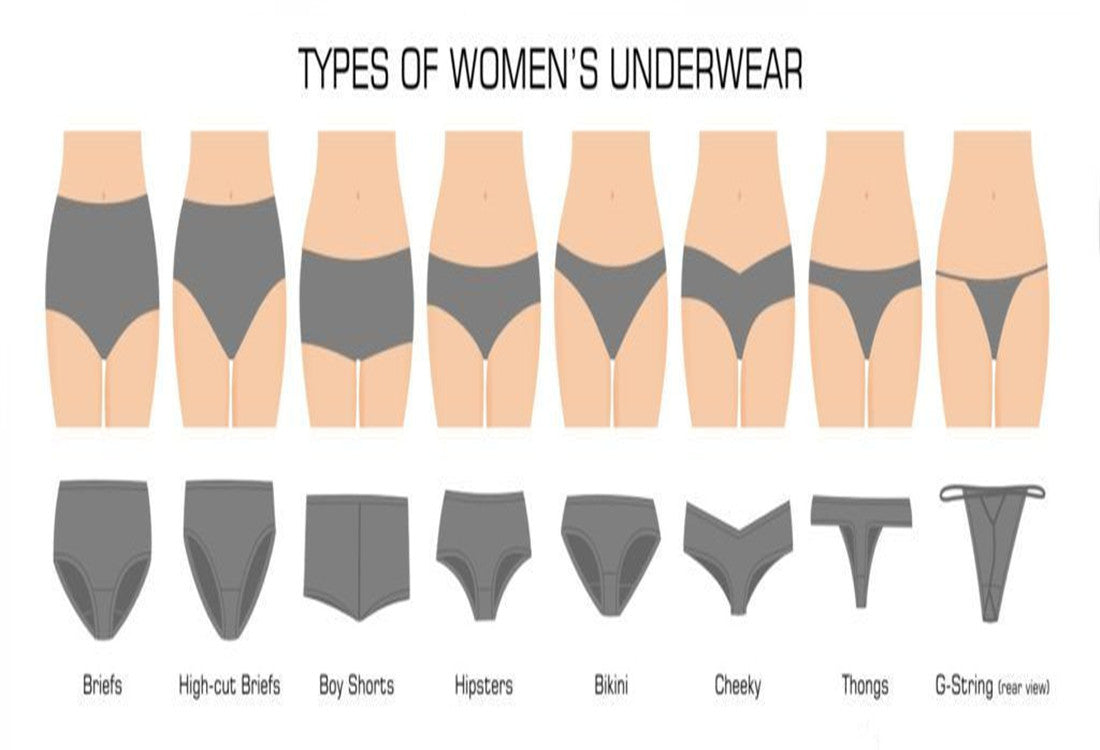Underwear is one of the most important aspects of many a man’s outfit. They are the first thing you put on and the last thing you take off, which makes it difficult to imagine a life without underwear as we know it (unless you’re a fan of going commando). However, the boxers, briefs, and jockstraps we wear today have come a long way from their meager beginnings.
In fact, it has taken mankind thousands of years and many millennia to create the soft, flexible comfort of today’s undergarments. Compared to our forefathers, you could even say we’re in a golden age of underwear.
How did underwear evolve? Check out our brief (pun intended) history of men’s underwear.
Breezy B.C. Beginnings: The Loincloth
The first known iteration of men’s underwear is dated to roughly 5000 B.C. and was little more than fabric draped across the nether regions. Comparable to Tarzan’s scant outfit, cavemen and women are often depicted wearing a loincloth. Generally, this fabric was created using some sort of leather, which offered more protection for the rough and tumble Neanderthal.
The loincloth is depicted in many cultures, such as indigenous communities and Mezoamerican peoples such as the Aztecs, but the most well known use of the loincloth was in Ancient Egypt. Art from this period depicts many people wearing a loincloth, or schenti, made of soft but durable linen, wrapped and tied around the front, reminiscent of a kilt. Almost all depictions of Ancient Egyptian men around this time are pictured wearing a loincloth, likely due to the fact that they did not impede movement, required little resources to make, and were breezy and breathable in the hot Egyptian desert.
Though nearly everyone was wearing a loincloth, high ranking officials and pharaohs wore specialized versions of the garment, called shendoh, which were made of expensive fabrics and embellished with jewels and other decorations. Many male mummies excavated were wearing these garments — though some of the fabric was often lost to time — and had additional loincloths left in their tombs as it was believed that they would be needed in the afterlife.
The Middle Ages: From Above-wear to Underwear
While the loincloth found wide use, especially in hotter areas of the globe, those living in colder climates needed something a bit more substantial to keep the chill out of their naughty bits. As civilization moved further north of the equator, variations of the loincloth were seen being worn underneath other garments, often wrapped between the legs before being tied to offer some protection against pants.
Early Celtic and Germanic tribes introduced braies (adopted also by the Romans, who called them braccae) a loose-fitting pant, generally made of leather or wool and falling to the knees or mid-calf and were tied shut at the waist.
In the Middle Ages, braies were updated with a revolutionary feature: the codpiece. A flap on the front of the garment, the codpiece could be fastened and unfastened — either with buttons on the braies themselves, or as a separate piece — which allowed the wearer to take off the codpiece to urinate without taking their braies completely off. Now a hallmark of the era, men were often depicted wearing long tunics to reveal heavily padded codpieces that drew attention to their genitals, a phenomenon some historians refer to as “Renaissance crotch”.
By the later Middle Ages, braies were worn under clothes, rather than on their own, making them more like the men’s underwear of today. This version was made in softer fabrics, such as linen or wool, and could be tied or buttoned shut.
The Industrial Revolution: Revolutionizing Men’s Underwear
The 19th century and the Industrial Age brought us many advancements in textile manufacturing and production, making well-made fabrics more accessible for the masses. Now more than ever, comfort was in demand.
In the Victorian era, men commonly wore an iteration of braies called “drawers”, fitted, knee length flannel shorts (usually with a matching top) under their clothes.
The union suit, which was patented in 1868, was a full-length onesie, with long sleeves and pants, buttoned at the torso. In addition, the union suit had what is now an iconic feature — a flap that buttoned close on the rear to make using the bathroom with ease. Now known as “Long Johns”, the union suit was the most popular type of men’s underwear of the era and can still be seen today.
Just years later in 1874, a new type of undergarment was introduced as the solution to the unending genital jostling and pain experienced by male cyclists in big, cobble stoned cities: the jockstrap. C.F. Bennett’s invention featured a stretchy, elastic waistband around the torso and buttocks attached to a supportive pouch that could be fitted with a cup for extra defense. The jockstrap has changed very little since then.
The Roaring ‘20s and Beyond: Boxers and Briefs are Born
In 1925, Everlast founder Jacob Golomb wanted to improve upon the shorts worn by boxers, who wore large trunks with leather belts. He replaced the leather with elastic waistbands to improve comfort and mobility, but due to the lack of support, the men’s underwear called “boxers” didn’t become popular until the 1940s and ‘50s.
Shortly after the invention of boxer shorts, in 1934, designer Arthur Kneibler was inspired by European, Speedo-style men’s swimwear and adapted the design into men’s underwear. The style was often referred to as “Jockey shorts” as they were as supportive as jockstraps, but we now know them best as briefs.
Since then, manufacturers have expanded upon these inventions to create the comfortable and supportive men’s underwear we know today. As textile technology advanced, boxers, briefs, and boxer-briefs now come in a variety of comfortable fabrics and wild, aesthetically pleasing colors and designs.
The BKage Underwear Difference
Want to create the next big trend in men’s underwear, or simply design your own? BKage Underwear is the premiere manufacturer of men’s underwear of all types, and we are ready to help you create the skivvies you’ve always wanted to wear.




